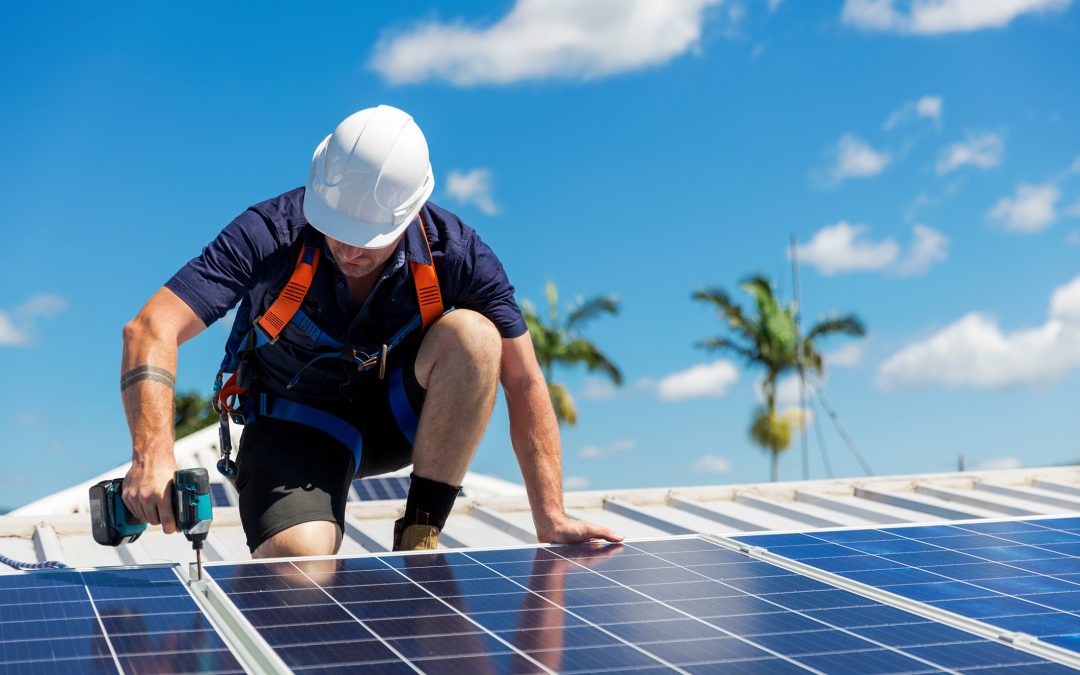Solar energy is a sustainable, cost-effective solution for homeowners and property owners looking to reduce their energy costs and carbon footprint. If you’re considering this renewable energy source, you might be wondering, “How does the solar panel installation process work?” This article will guide you through the process, ensuring you’re well-informed every step of the way.
Understanding the Solar Panel Installation Process
The solar panel installation process involves several key steps, typically handled by your chosen solar installation company. Here’s a step-by-step overview of what you can expect:
Step 1: Engineering Site Visit
After signing a contract with your solar installer, an engineer will visit your property. This visit is crucial to evaluate the electrical status of your home and ensure everything is compatible with your new photovoltaic (PV) system. They will assess the condition of your roof and your electrical panel to see if any upgrades are needed.
Step 2: Permits and Documentation
The next step involves handling the necessary paperwork. This includes applying for state and federal solar incentives, such as the federal Investment Tax Credit (ITC), and local solar programs like government rebates. Your installer will also apply for the building permits required for the solar panel installation process.
Step 3: Ordering Equipment
Once the paperwork is set up, your installer will order the necessary equipment. This includes the solar panels and inverters. You’ll have the opportunity to discuss the best equipment for your needs with your installer.
Step 4: Solar Panel Installation
The actual installation of your system will generally take one to three days. The installer will prep your roof, install electrical wiring, set up racking to support your panels, attach the panels to the racking, and connect the inverters to the panels.
Step 5: Approval and Interconnection
Finally, a representative from your local government will inspect the system and give approval. Then, a representative from your utility company will do their final evaluation. Once they give the okay, your system will be connected to the grid and start producing energy.
Your Role as a Property Owner in the Solar Panel Installation Process
As a property owner, your primary responsibility is to select a reputable solar installation company and sign a contract with them. The company will handle most of the technical and administrative tasks. However, you should stay informed about the process and check in with the installer to ensure everything is proceeding as planned.
Solar Panel Installation Simplified
The installation process involves several key steps, which are typically handled by your chosen solar installation company. Here’s a simplified overview of the process:
- Engineering Site Visit: After signing a contract with your solar installer, an engineer will visit your property to evaluate the electrical status of your home and ensure everything is compatible with your new photovoltaic (PV) system. They will evaluate the condition of your roof and your electrical panel to see if any upgrades are needed.
- Permits and Documentation: The installer will handle the necessary paperwork, which includes applying for state and federal solar incentives, such as the federal Investment Tax Credit (ITC) and local solar programs like government rebates. They will also apply for building permits required for the solar panel installation.
- Ordering Equipment: Once the paperwork is set up, your installer will order the necessary equipment, which includes the solar panels and inverters.
- Solar Panel Installation: The actual installation of your system will generally take one to three days. The installer will prep your roof, install electrical wiring, set up racking to support your panels, attach the panels to the racking, and connect the inverters to the panels.
- Approval and Interconnection: A representative from your local government will inspect the system and give approval. Then, a representative from your utility company will do their final evaluation. Once they give the okay, your system will be connected to the grid and start producing energy.
What Do Property Owners Need to Do?
As a property owner, your primary responsibility is to select a reputable solar installation company and sign a contract with them. The company will handle most of the technical and administrative tasks. However, you should stay informed about the process and check in with the installer to ensure everything is proceeding as planned.
You may also need to make some decisions about the equipment used in your system. Your installer will likely recommend particular brands of solar panels and inverters, but it’s a good idea to do some research on your own to ensure you’re getting the best equipment for your needs.
Useful Resources
For more detailed information about the solar panel installation process, check out these resources:
- Homeowner’s Guide to Going Solar from the U.S. Department of Energy
- Solar Panel Installation Guide from EnergySage
- Solar Panel Installation from Solar22, a Florida-based solar installation company
These resources provide comprehensive guides to the solar installation process, including tips on choosing an installer, understanding the costs involved, and maximizing the benefits of your solar energy system.
Installing solar panels is a significant investment, but it can offer substantial benefits in terms of energy savings and environmental impact. By understanding the installation process and your role as a property owner, you can ensure a smooth transition to solar energy.

